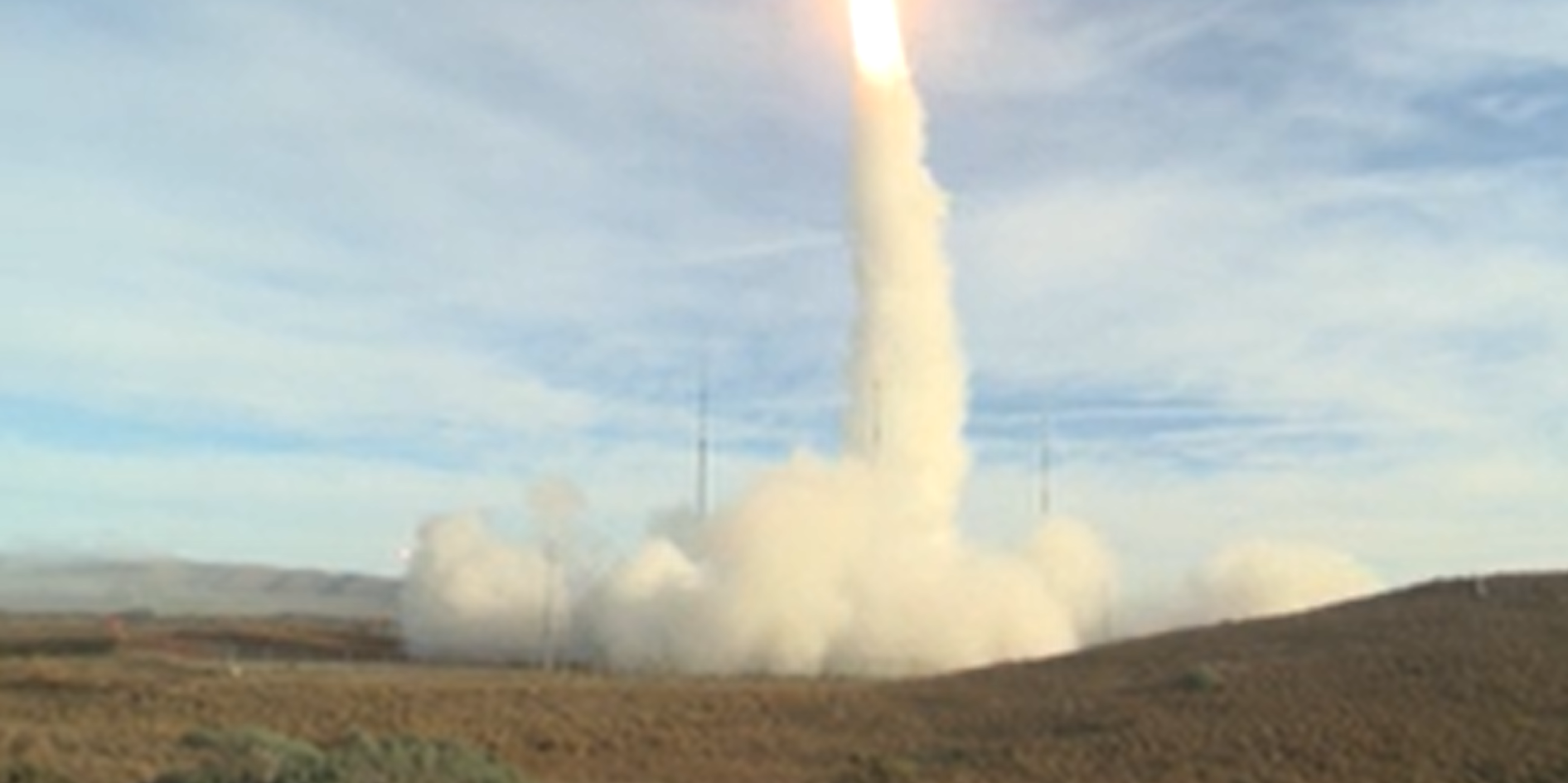According to a press release from the Pentagon, the United States has just test-fired a prototype missile from the Vandenberg Air Base in California which flew 500 kilometers out before detonating into the ocean.
“Data collected and lessons learned from this test will inform the Department of Defense’s development of future intermediate-range capabilities,” read the press release.
A video of the launch was posted online by the DoD.
500 kilometers of missile flight was, up until quite recently, in violation of the Intermediate-Range Nuclear Forces Treaty (INF) negotiated by President Ronald Reagan and Mikhail Gorbachev in 1987 as one the first steps towards denuclearizing the chessboard during the twilight of the Cold War.
President Trump formally withdrew the United States from the treaty this summer calling it a “relic” of Cold War history and “obsolete” in modern military strategy.

“Not the start of a new arms race”
Shortly after the announcement, when asked if he wished to see ground-based intermediate-range missile systems deployed to Asia, Sec. of Defense Mark Esper told reporters “yes, I would like to. I would prefer months … But these things tend to take longer than you expect”.
“The facts are clear. The Russian Federation is producing and fielding an offensive capability that was prohibited by the INF Treaty.” said the Department of Defense In a statement at the time.
“As stated by NATO Secretary General Jens Stoltenberg today, NATO’s position is united and clear: Russia is in violation of the INF Treaty. The United States is not”.
Esper told reporters he does not believe the end of this treaty will result in a new arms race, even though since 2017, the United States has been laying the groundwork for the day when the treaty would no longer be in effect, culminating in this most recent test.
China, now a preeminent nuclear power, indeed carries many weapons in her arsenal capable of going past 500 kilometers, and it was for that reason Donald Trump referred to it as “obsolete”.
Yet if the United States begins to work to “catch up” to China’s arsenal, then it would be hard for Esper to describe a situation where the United States wasn’t in a “race”.
A new Cold War
In the most recent and troubled meeting of the NATO member states, it became clear the focus of NATO was no longer of preventing war, but on confronting an increasingly “assertive” Russia in what some analysts have described as a “new Cold War,”
“Nato has no intention of deploying land-based nuclear missiles in Europe,” Secretary General Stoltenberg said during a press conference. Esper’s comments would certainly suggest a divergence of fact and opinion between the alliance and the Pentagon.
As it turns out, the United is on track to have more military and spend more money on NATO defense commitments than it did during the 70s and 80s.
“Sometimes we also hear that the US is leaving Europe,” said Stoltenberg in the opening of the 70th Anniversary meeting of the NATO members in London. “That’s not correct. The US is actually increasing their presence in Europe”.
Harlan Ullman of the Atlantic Council questioned the Secretary on how much of a threat Russia could honestly pose when “NATO spends about 15 times more on defence than Russia does,” and that “only four NATO states physically border on Russia”.
Stoltenberg then described NATO’s stance towards Russia as one that tries to balance “defense, deterrence, and dialogue,” in equal measure.
Stoltenberg gave assurances that regardless of comments slung back and forth between Europe and the United States NATO was still “the most successful alliance in history,” and that “as long as we continue to change, we will continue to be the most successful alliance in history”.
Ray McGovern, writing for Antiwar.com, details that it was NATO plans to offer membership to Ukraine and Georgia, and an American-instigated coup d’etat in Ukraine after the Crimean people overwhelmingly voted for independence that caused Russia to seize the tiny peninsula containing their only warm-water naval base; one that had been in use by the Russian navy for decades.
For years, since 2008, Russia had been warning NATO that adding Georgia and Ukraine into their ranks was unacceptable for a number of security reasons. Foreign Minister Sergei Lavrov even went so far as to cable U.S. Ambassador William Burns “Nyet means nyet”.
None of recent history between Russia and NATO adds up to anything other than a new bilateral challenge for power and escalation dominance in the region. WaL
PICTURED: A new intermediate-range missile leaves its static launch platform. Photo credit DoD video of the latest missile test.



